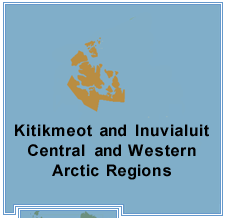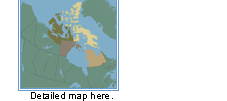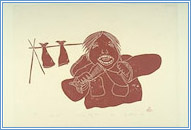 | |
  |
Kitikmeot and Inuvialuit The creation of works of art began late in these two regions. In Taloyoak, a large quantity of whalebone shipped in by the federal government in 1967 triggered the beginning of a carving program. In Holman, the Oblate missionary tried to help his congregation by starting a printmaking program in 1965, modelled on the successful one at Cape Dorset. In Taloyoak, Karoo Ashevak had a lasting influence on carvers from the community. He created whimsical spirit figures, assembled out of different pieces of whalebone and other local materials. Spirit figures with distorted faces, reminiscent of ceremonial masks, have remained a hallmark of the community to this day. |
|
The community of Pelly Bay remained isolated from outside influences until the late 1960s. Encouraged by the missionary priest, local artists chose ivory miniatures as their main form of expression. In Holman, on Victoria Island, a printmaking program was initiated using very basic equipment. Simple black silhouettes, rendered from pencil drawings, became a characteristic of Holman prints.
HIGHLIGHT FROM THE EXHIBIT 
Eating Dry Fish    Iqqaipaa Menu | Exhibition | Nunavik | Qikiqtaaluk | Kivalliq | Kitikmeot and Inuvialuit | |